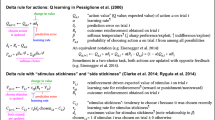Abstract
Behavioral neuropharmacology is an area of neuroscience, which is responsible for the study of behavioral modifications through the administration of substances, treatments or experimental manipulations. Particularly to determine the effect on behavior, this area uses classic statistical techniques for comparing measures of central tendency; the analysis of variables is mostly carried out in a univariate manner, where the interpretation of the results obtained is often limited. There are other areas that also provide tools for data analysis, such as computational learning, through prediction models we can determine the characteristic behavioral patterns of each treatment administered. In the present study, computational learning data analysis techniques were used, specifically, supervised machine learning applied to a behavioral neuropharmacology experiment, where 3 doses of allopregnanolone (0.5, 1, and 2 mg) were evaluated in maze tests. Raised arms and motor activity test. We identified with classical statistical methods that the 2 mg dose of allopregananolone has an anxiolytic-type effect, similar to that exerted by the reference drug diazepam. Additionally, with computational learning methods, we can identify the characteristic patterns of each treatment based on the combination of the variables of both behavioral tests, likewise, we demonstrate with mathematical support the most important variables for the identification of anxioselective effects. In conclusion, computational learning methods promote enrichment in the results of neuropharmacology reflected in the characteristic patterns that are modified by the administration of different drugs, and provide foundations to support the importance of the most relevant variables of behavioral tests.
Access this chapter
Tax calculation will be finalised at checkout
Purchases are for personal use only
Similar content being viewed by others
References
Branch, M.N.: Behavioral pharmacology. In: Techniques in the Behavioral and Neural Sciences, vol. 6, pp. 21–77. Elsevier (1991)
Sañudo-Peña, M.C., Walker, J.M.: Effects of intrapallidal cannabinoids on rotational behavior in rats: interactions with the dopaminergic system. Synapse 28(1), 27–32 (1998)
Landgraf, R., Wigger, A.: High vs low anxiety-related behavior rats: an animal model of extremes in trait anxiety. Behav. Genet. 32, 301–314 (2002)
Planchez, B., Surget, A., Belzung, C.: Animal models of major depression: drawbacks and challenges. J. Neural Transm. 126, 1383–1408 (2019)
Blokland, A., Geraerts, E., Been, M.: A detailed analysis of rats’ spatial memory in a probe trial of a Morris task. Behav. Brain Res. 154(1), 71–75 (2004)
ELMostafi, H., et al.: Neuroprotective potential of Argan oil in neuropsychiatric disorders in rats: a review. J. Funct. Foods 75, 104233 (2020)
Van Haaren, F.: Methods in Behavioral Pharmacology. Elsevier, Amsterdam (2013)
Wilcox, R.R., Keselman, H.J.: Modern robust data analysis methods: measures of central tendency. Psychol. Methods 8(3), 254 (2003)
Li, H., et al.: Modulation of astrocyte activity and improvement of oxidative stress through blockage of NO/NMDAR pathway improve posttraumatic stress disorder (PTSD)-like behavior induced by social isolation stress. Brain Behav. 12(7), e2620 (2022)
Boyko, M., et al.: Traumatic brain injury-induced submissive behavior in rats: link to depression and anxiety. Transl. Psychiatry 12(1), 239 (2022)
Norma Oficial Mexicana NOM-062-ZOO-1999: Especificaciones Técnicas para la producción, Cuidado y Uso de los Animales de Laboratorio. Secretaría de Agricultura, Ganadería, Desarrollo Rural, Pesca y Alimentación. México, D.F. (1999)
Institute of Laboratory Animal Resources (US): Committee on Care & Use of Laboratory Animals: Guide for the care and use of laboratory animals (No. 86). US Department of Health and Human Services, Public Health Service, National Institutes of Health (1986)
Pellow, S., Chopin, P., File, S.E., Briley, M.: Validation of open: closed arm entries in an elevated plus-maze as a measure of anxiety in the rat. J. Neurosci. Methods 14(3), 149–167 (1985)
Cohen, H., Matar, M.A., Joseph, Z.: Animal models of post- traumatic stress disorder. Curr. Protoc. Neurosci. 64(1), 9–45 (2013)
Hall, C.S.: Emotional behavior in the rat. I. Defecation and urination as measures of individual differences in emotionality. J. Comparat. Psychol. 18(3), 385 (1934)
Martínez, R.E.B., et al.: Árboles de decisión como herramienta en el diagnóstico médico. Rev. Médica Univ. Veracruzana 9(2), 19–24 (2009)
Fernández-Demeneghi, R., et al.: Effect of blackberry juice (Rubus fruticosus L.) on anxiety-like behaviour in Wistar rats. Int. J. Food Sci. Nutr. 70(7), 856–867 (2019)
Hassan, C.A.U., Khan, M.S., Shah, M.A.: Comparison of machine learning algorithms in data classification. In: 2018 24th International Conference on Automation and Computing (ICAC), pp. 1–6. IEEE (2018)
Arluk, S., et al.: MDMA treatment paired with a trauma-cue promotes adaptive stress responses in a translational model of PTSD in rats. Transl. Psychiatry 12(1), 181 (2022)
Kraeuter, A.K., Guest, P.C., Sarnyai, Z.: The open field test for measuring locomotor activity and anxiety-like behavior. Pre-clin. Models: Techn. Protocols 99–103 (2019)
Bernal-Morales, B., Rodríguez-Landa, J.F., Ayala-Saavedra, D.R., Valenzuela-Limón, O.L., Guillén-Ruiz, G., Limón-Vázquez, A.K.: La conducta de acicalamiento en ratas estresadas y el efecto restaurador de la fluoxetina1, 2. Conductual 8, 1–14 (2020)
Acknowledgements
The authors gratefully acknowledge CONAHCyT to grant scholarship 628503 to Isidro Vargas-Moreno for Postgraduate Studies in Neuroethology.
Author information
Authors and Affiliations
Corresponding author
Editor information
Editors and Affiliations
Rights and permissions
Copyright information
© 2024 The Author(s), under exclusive license to Springer Nature Switzerland AG
About this paper
Cite this paper
Vargas-Moreno, I., Acosta-Mesa, H.G., Rodríguez-Landa, J.F., Avendaño-Garido, M.L., Herrera-Meza, S. (2024). Computational Learning in Behavioral Neuropharmacology. In: Calvo, H., Martínez-Villaseñor, L., Ponce, H., Zatarain Cabada, R., Montes Rivera, M., Mezura-Montes, E. (eds) Advances in Computational Intelligence. MICAI 2023 International Workshops. MICAI 2023. Lecture Notes in Computer Science(), vol 14502. Springer, Cham. https://doi.org/10.1007/978-3-031-51940-6_32
Download citation
DOI: https://doi.org/10.1007/978-3-031-51940-6_32
Published:
Publisher Name: Springer, Cham
Print ISBN: 978-3-031-51939-0
Online ISBN: 978-3-031-51940-6
eBook Packages: Computer ScienceComputer Science (R0)




